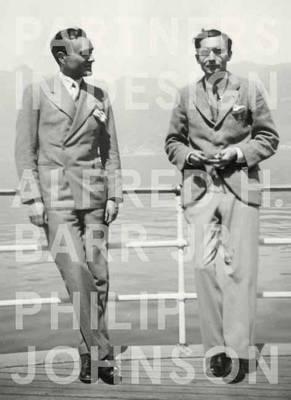Partners In Design

Partners In Design
Partners in Design, which accompanies an exhibition opening at the Montreal Museum of Fine Arts in April 2016, chronicles their collaboration, placing it in the larger context of the avant-garde in New York--1930s salons where they mingled with Julien Levy, the gallerist who brought Surrealism to the United States, and Lincoln Kirstein, co-founder of the New York City Ballet; their work to help Bauhaus artists like Josef and Anni Albers escape Nazi Germany--and the dissemination of their ideas across the United States through MoMA's traveling exhibition program. Plentifully illustrated with icons of modernist design, MoMA installation views, and previously unpublished images of the Barr and Johnson apartments--domestic laboratories for modernism, and in Johnson's case, designed and furnished by Ludwig Mies van der Rohe--this fascinating study sheds new light on the introduction and success in North America of a new kind of modernism, thanks to the combined efforts of two uniquely discerning and influential individuals.
PRP: 306.00 Lei
Acesta este Pretul Recomandat de Producator. Pretul de vanzare al produsului este afisat mai jos.
275.40Lei
275.40Lei
306.00 LeiIndisponibil
Descrierea produsului
Partners in Design, which accompanies an exhibition opening at the Montreal Museum of Fine Arts in April 2016, chronicles their collaboration, placing it in the larger context of the avant-garde in New York--1930s salons where they mingled with Julien Levy, the gallerist who brought Surrealism to the United States, and Lincoln Kirstein, co-founder of the New York City Ballet; their work to help Bauhaus artists like Josef and Anni Albers escape Nazi Germany--and the dissemination of their ideas across the United States through MoMA's traveling exhibition program. Plentifully illustrated with icons of modernist design, MoMA installation views, and previously unpublished images of the Barr and Johnson apartments--domestic laboratories for modernism, and in Johnson's case, designed and furnished by Ludwig Mies van der Rohe--this fascinating study sheds new light on the introduction and success in North America of a new kind of modernism, thanks to the combined efforts of two uniquely discerning and influential individuals.
Detaliile produsului








